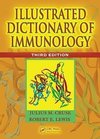
Venomous spiders
Source: Wikipedia. Pages: 34. Chapters: Brown recluse spider, Tarantula, Katipo, Redback spider, Australian funnel-web spider, Latrodectus mactans, Brazilian wandering spider, Chilean recluse, Steatoda, Steatoda nobilis, Steatoda grossa, Sydney funnel-web... Viac o knihe
Produkt je dočasne nedostupný
14.61 €
bežná cena: 16.60 €
O knihe
Source: Wikipedia. Pages: 34. Chapters: Brown recluse spider, Tarantula, Katipo, Redback spider, Australian funnel-web spider, Latrodectus mactans, Brazilian wandering spider, Chilean recluse, Steatoda, Steatoda nobilis, Steatoda grossa, Sydney funnel-web spider, Eastern tarantula, Missulena, Latrodectus hesperus, Latrodectus tredecimguttatus, Loxosceles deserta, Hadronyche formidabilis, Cheiracanthium punctorium, Six-eyed sand spider, ArachnoServer, Latrodectus variolus. Excerpt: Tarantulas (as the term is used in North America) comprise a group of hairy and often very large arachnids belonging to the family Theraphosidae, of which approximately 900 species have been identified. Some members of the same Suborder may also be called "tarantulas" in the common parlance. This article will restrict itself to describing members of Theraphosidae. Brazilian tarantula in attacking positionSome genera of tarantulas hunt prey primarily in trees; others hunt on or near the ground. All tarantulas can produce silk-while arboreal species will typically reside in a silken "tube tent", terrestrial species will line their burrows with silk to stabilize the burrow wall and facilitate climbing up and down. Tarantulas mainly eat insects and other arthropods, using ambush as their primary method of prey capture. The biggest tarantulas can kill animals as large as lizards, mice, and birds. Tarantulas are found in tropical and desert regions around the world. Most tarantulas are harmless to humans, and some species are popular in the exotic pet trade. All tarantulas are venomous, but only some species have venom that, while not known to have ever produced human fatalities, can produce extreme discomfort over a period of several days. Like all arthropods, the tarantula is an invertebrate that relies on an exoskeleton for muscular support. A tarantula's body consists of two main parts, the prosoma (cephalothorax) and the opisthosoma (abdomen). The prosoma and opisthosoma are connected by the pedicle, or what is often called the pregenital somite. This waist-like connecting piece is actually part of the prosoma and allows the opisthosoma to move in a wide range of motion relative to the prosoma. Depending on the species, the body length of tarantulas ranges from 2.5 to 10 centimetres (1 to 4 in), with 8-30-centimetre (3-12 in) leg spans. Leg span is determined by measuring from the tip of the back leg to the tip of the front leg on the opposite side. The largest speci
- Vydavateľstvo: Books LLC, Reference Series
- Formát: Paperback
- Jazyk:
- ISBN: 9781156096697



 Anglický jazyk
Anglický jazyk 








